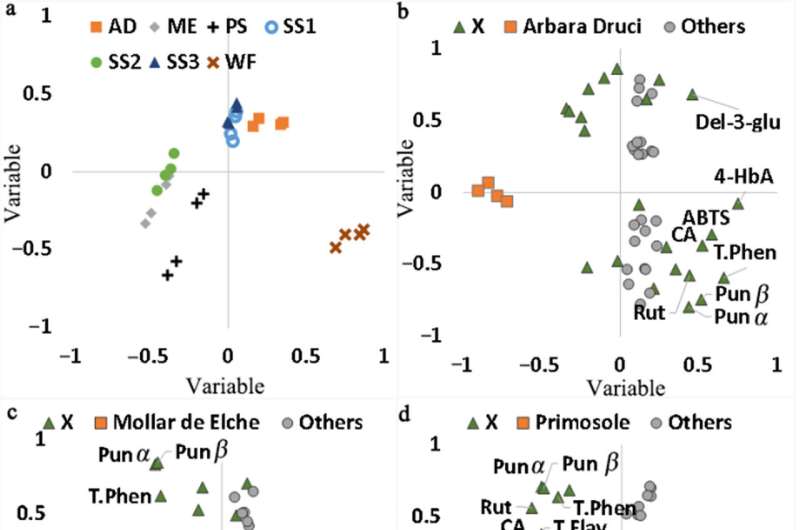This article has been reviewed according to Science X's editorial process and policies. Editors have highlighted the following attributes while ensuring the content's credibility:
fact-checked
proofread
Pomegranate power: Unlocking sustainable antimicrobial solutions from peels

Pomegranates, known for their rich phenolic content, have been explored for their potential as natural antimicrobials. The research focuses on the peel, which contains a high concentration of these beneficial compounds and represents a significant portion of the fruit's biomass. The study presents a multivariate approach to screen different pomegranate varieties for their antimicrobial and antibiofilm activities.
In a contribution to the field of natural antimicrobials, a team of researchers led by Amira Salim has conducted a comprehensive analysis of the antimicrobial properties of pomegranate peel extracts. The study, published in the Journal of Bioresources and Bioproducts, evaluated seven varieties of Punica granatum grown in Sardinia, Italy, for their phenolic content and ability to combat various strains of bacteria and fungi.
The research employed a multivariate statistical method, Orthogonal Projections to Latent Structures Discriminant Analysis (OPLS-DA), to characterize the chemical composition of the pomegranate peel extracts (PPEs). The antimicrobial activities of these extracts were tested against a range of bacterial strains, including Staphylococcus aureus and Listeria monocytogenes, which are known to cause severe infections in humans.
The results indicated that the PPEs demonstrated significant antimicrobial activity, particularly against Gram-positive species. Notably, the extracts from the Mollar de Elche, Primosole, and Sassari three varieties showed the highest antimicrobial potency, with the ability to reduce biofilm activity by over 70% at concentrations between 0.19 to 1.50 mg/mL. The study also found a positive correlation between the antimicrobial activity and the content of punicalagin, flavonoids, and chlorogenic acid in the extracts.
In addition to their antimicrobial properties, the PPEs also exhibited low sensitivity towards probiotic strains La. casei and Li. reuteri, suggesting their potential use in the food industry without disrupting beneficial bacteria.
The study concludes by highlighting the potential of pomegranate peel extracts as a sustainable and natural source of antimicrobials, aligning with the principles of a circular economy by repurposing an agricultural byproduct.
The findings propose a promising direction for the development of plant-derived antimicrobial products as an alternative to synthetic compounds, offering new opportunities for the agricultural and pharmaceutical sectors.
More information: Amira Salim et al, Antimicrobial and antibiofilm activities of pomegranate peel phenolic compounds: Varietal screening through a multivariate approach, Journal of Bioresources and Bioproducts (2023). DOI: 10.1016/j.jobab.2023.01.006
Provided by Journal of Bioresources and Bioproducts




















